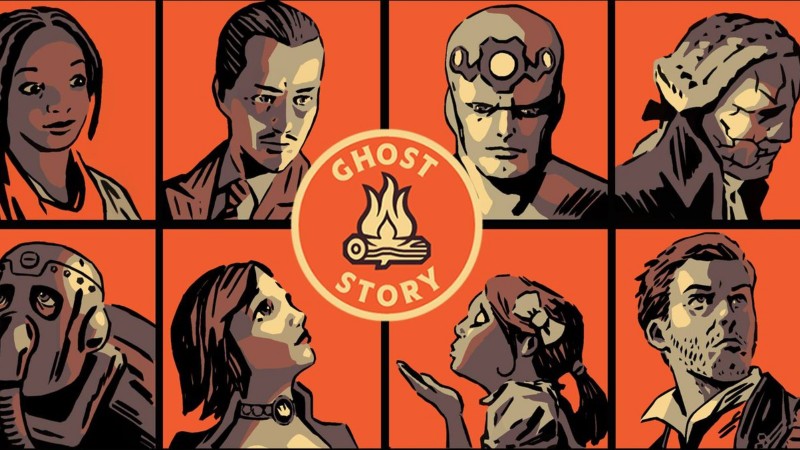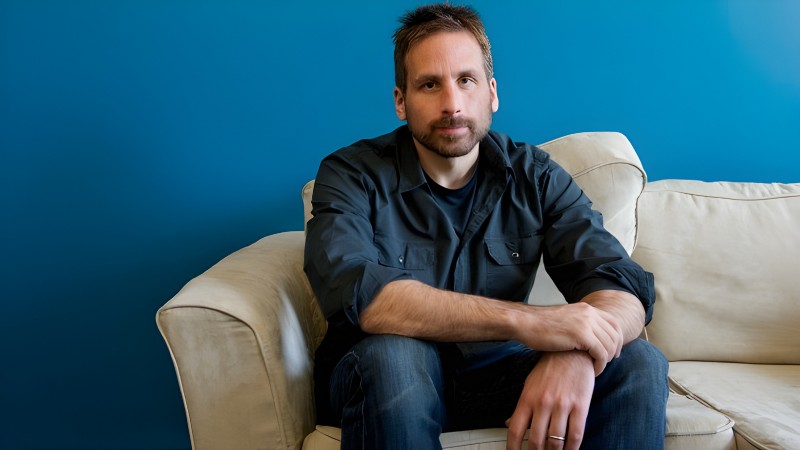New Report Details BioShock Creator’s New Game And The Rocky Development, Employee Burnout, And Numerous Content Cuts Surrounding It Leave a comment
Ken Levine, the creator of the famed BioShock series, put out his last game, BioShock Infinite, in 2013. Shortly after, he closed the doors of Irrational Games, a studio he started in 1997. Most of the staff was let go, on short notice no less, but a handful of developers were hand-picked to join his new smaller studio startup, Ghost Story Games.
That new studio, still under the helm of 2K and parent company Take-Two Interactive, began work on a new game – it’s that narrative Legos one Levine talked about years and years ago – in 2014. Now, eight years later, not a trace of that game has been seen by the public and a new report from Bloomberg reveals why.

Ghost Story Games
Sadly, what’s revealed in the report is not at all uncommon in video game development: poor leadership, employee burnout and frustration, and the dogmatic pursuit of one person’s vision for a game, in spite of what said pursuit could do to others at the studio. Game Informer has collected some of these stories of development hell in a recent series that you can catch up on here: Video Games Stuck In Development Hell Part 1, Part 2, and Part 3.
Bloomberg spoke to multiple Ghost Story employees, both current and former, and the publication reports that many blame Levine for the “tortured project,” citing that he’s a “flawed manager who often struggles to communicate his vision and alienates or browbeats subordinates who challenge him or fail to meet his expectations.”
One joke that occurred around the office was called “Kenception.” Alluding to Christopher Nolan’s 2010 film, Inception, former and current anonymous employees at Ghost Story said that persuading Levine was so difficult that it might have been easier to infiltrate his dreams and plant an idea so that when Levine woke up, he’d think it was something he came up with himself.
Those Bloomberg spoke to also detailed the flaws in allowing someone like Levine to have so much autonomy over what Ghost Story creates. Sure, Levine might create the next BioShock for 2K and Take-Two, but some who worked with him have wondered at what cost. Mike Snight, who helped start Ghost Story with Levine, ended up leaving the studio due to his unhappiness with the seemingly endless cycles of create-cut-create-cut-and-repeat Levine is known for.
“Ken is a very hard person to work for,” Snight said. “I think he tried a lot to change, and he really excels better at this company than Irrational because it is a smaller group of people.”
However, Levine’s creative process led to Snight’s departure from Ghost Story.
“When it continuously goes in cycles and you don’t align anymore, you kind of get tired of being part of that,” he said. “I wasn’t really happy anymore.”
Part of that creative process is seemingly hampered by how much control Levine is given. Bloomberg writes that in negotiating a contract with Take-Two, Levine successfully negotiated that he answers directly to Take-Two, rather than 2K, the publishing company that will (maybe) one day publish his next game. Employees said that occasionally Take-Two executives would stop by Ghost Story for updates but that other than that, what happened at Ghost Story was up to Levine.
If he wanted to cut months of work because he was no longer happy with it, he would, much to the dismay of the employee that worked on said work. It’s not surprising, though, considering Levine has publicly discussed how okay he is with cutting content.
As noted by Bloomberg, Levine told AusGamers in a 2012 interview that he “probably cut two games worth of stuff” while developing BioShock Infinite. Then, a couple of years later, Levin said, “in almost every game I’ve worked on, you realize you’re running out of time, and then you make the game.”
“You sort of dick around for years, and then you’re like, ‘Oh my god, we’re almost out of time’ and it forces you to make these decisions.”
With no hard deadline due to the amount of autonomy Levin has been given at Ghost Story, time seemingly doesn’t run out, so he reportedly continues to cut and gut as he pleases, leaving employees at Ghost Story to wonder when their game will ever see the light of day. Some stick around but others leave as a result, according to Bloomberg’s report, and sadly, because contracts often stipulate that work cannot be shown until publicly released, many are left in awkward situations where they have years of work at Ghost Story on their resume and nothing to show for it in their portfolio.
Speaking of games to show for, or rather, games that haven’t yet seen the light of day, Blomberg reports that Levine’s “narrative Lego” proof-of-concept game was supposed to come in the form of a Fall 2017 sci-fi shooter set on a mysterious space station inhabited (and fought over) by three factions. Depending on what players did and how they built and shifted the narrative Legos, the factions would shift and change to enemies, allies, or something else.
Despite Levine’s goal of making Ghost Story feel like an indie studio (in terms of creativity and pace) with a AAA budget (courtesy of Take-Two Interactive), his vision for this game was big and as ambitious as BioShock. Early employees at the studio told Bloomberg that they recalled a 2016 version of this game with “elaborate levels and rich, three-dimensional graphics.” They wondered how the team, which was fewer than three dozen developers, would finish the game.
“Others remembered a complicated dialogue system that would morph based on player choices, requiring a tremendous amount of writing that couldn’t have possibly been completed within a year,” Bloomberg writes.
One former Ghost Story employee, Giovanni Pasteris, said “the ideas and ambitions were great,” but that “the scope just grew and grew without concern for the team’s ability to get it done by our Fall 2017 deadline.” Pasteris said Levine wanted to make a AAA game with a “budget” team size, something he said would simply never happen. Missing the deadline was a problem further hampered by Levine’s ever-changing tastes, according to Bloomberg’s report.

Ken Levine
He would play games such as Dead Cells or Void Bastards and return to Ghost Story with requests to implement features seen in those in their own game. This caused the target release for this Fall 2017 game to shift to 2018 and then 2019. Now, one employee at Ghost Story says the team is finally optimistic that the game is on track but that it could still be two years away.
One positive, if you will, of this ever-changing deadline is an apparent lack of crunch, or at least minimized crunch time, but employees told Bloomberg that working on a game with no end in sight is its own challenge. Add in that Levine wanted to retain the cinematic direction and focus of BioShock and BioShock Infinite in this new project that was specifically designed to present a different experience to every player, and the development tension at Ghost Story only continues to grow.
Further alluding to Levine’s my-way-or-the-highway style of running a studio, Bloomberg’s report says that those who sparred with Levine at Ghost Story would be mysteriously let go, with managers simply stating that said let-go employee was a bad match for Ghost Story.
“[Levine] can be quite charming and charismatic,” Pasteris said. “[Levine] can become moody and lash out, singling out an individual, while berating them in front of their coworkers [too].”
Bloomberg paints an even more full picture of the rocky development this forthcoming Ghost Story title has gone through and the toll it’s taken on developers currently there and those that used to work at the studio. It’s worth reading the full report here. For more, check out our thoughts on Levine’s last game in Game Informer’s BioShock Infinite review and then read what we thought of 2016’s BioShock: The Collection. Read about what we want in the next BioShock game after that.
[Source: Bloomberg]